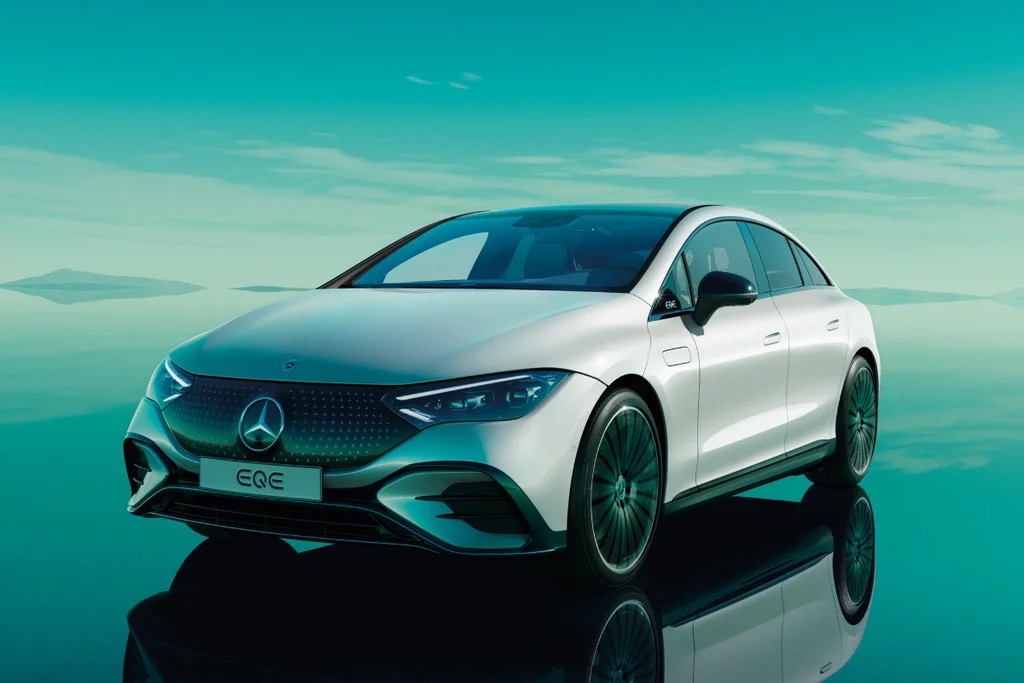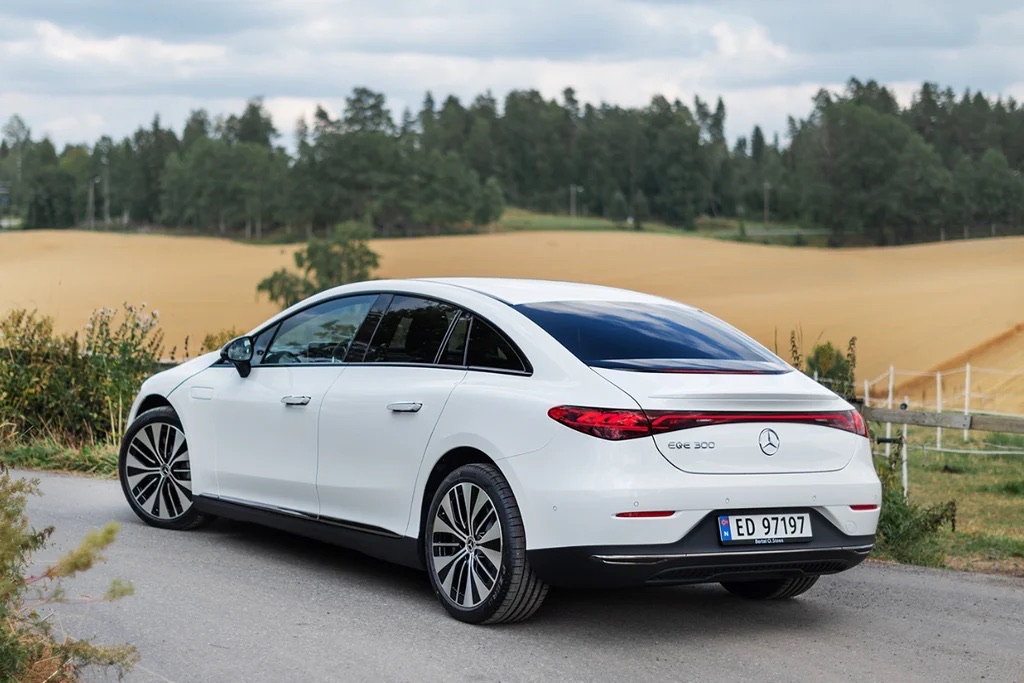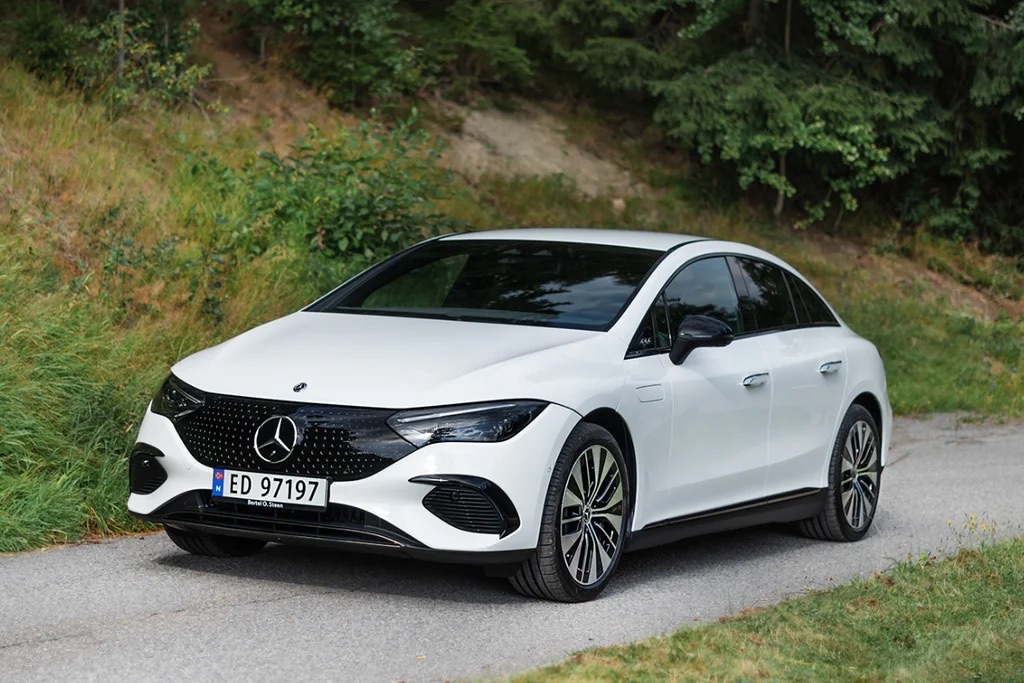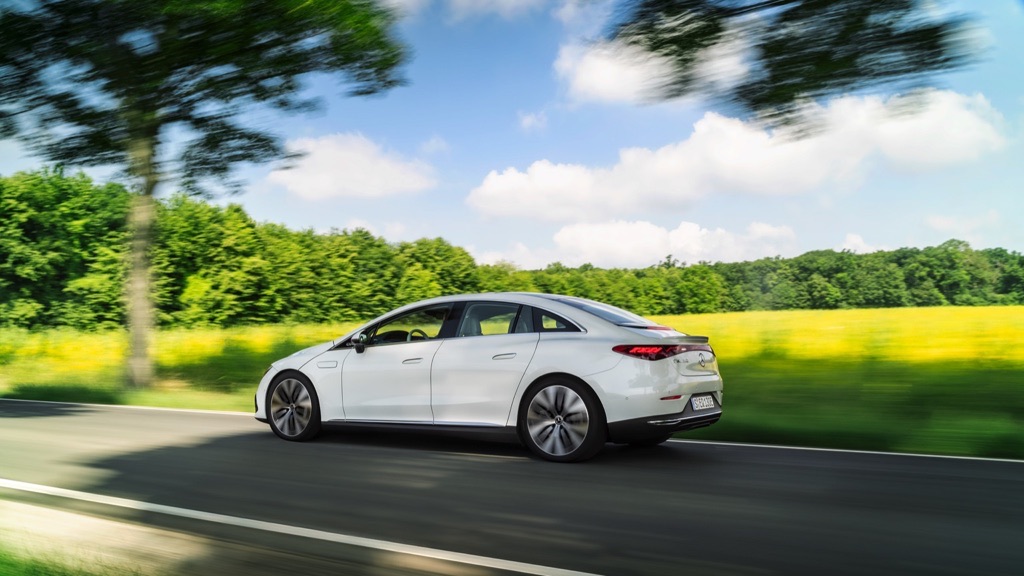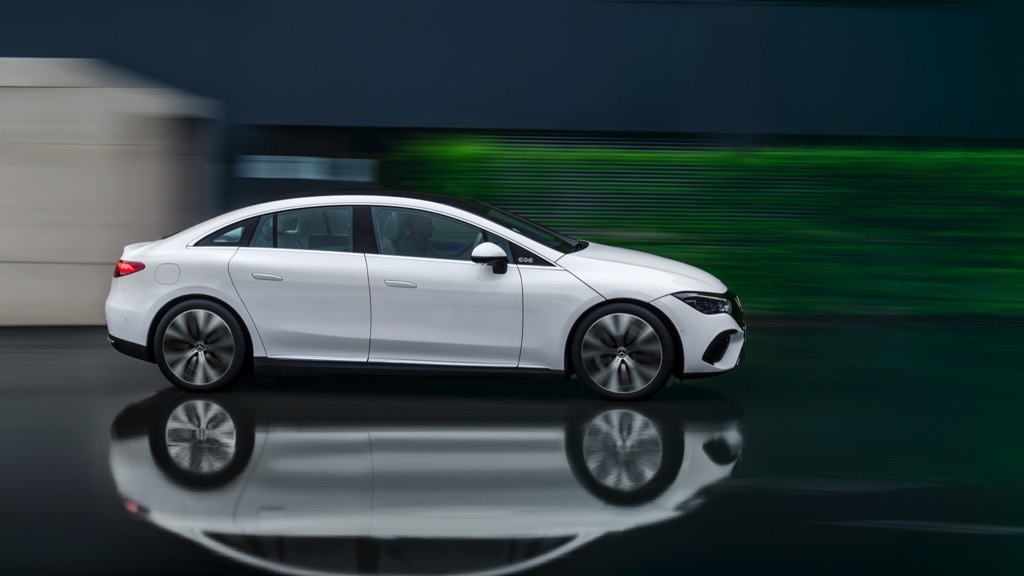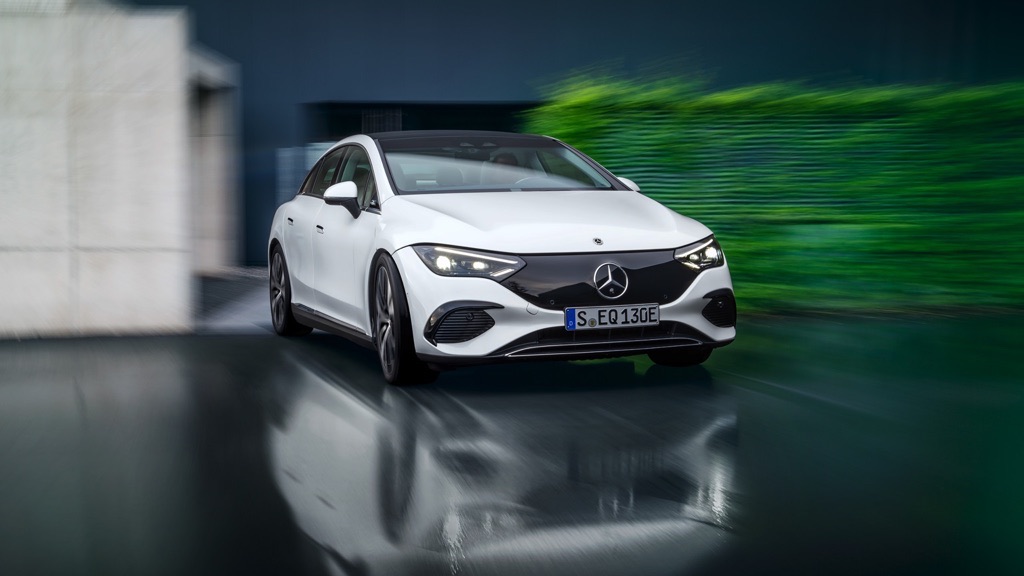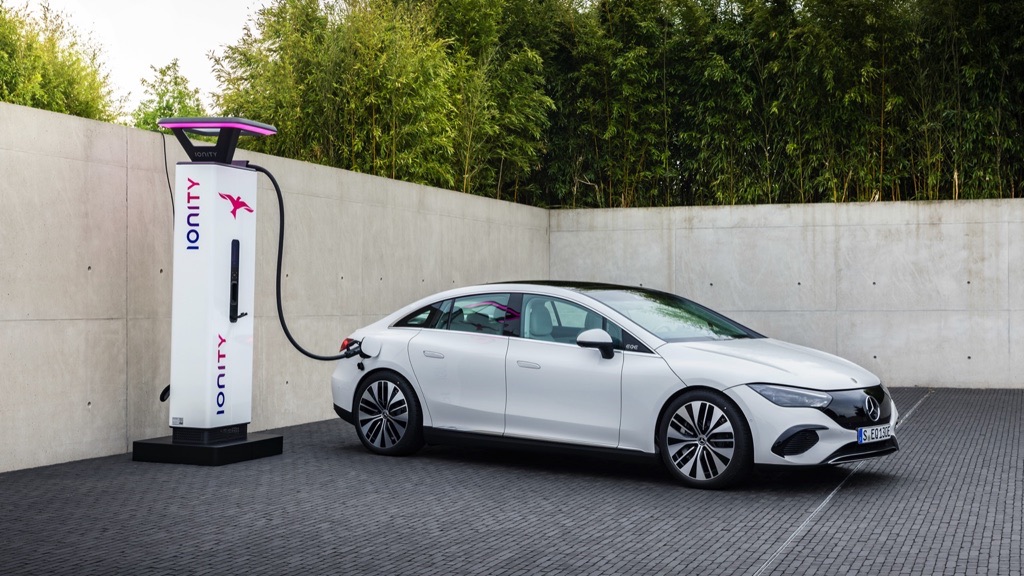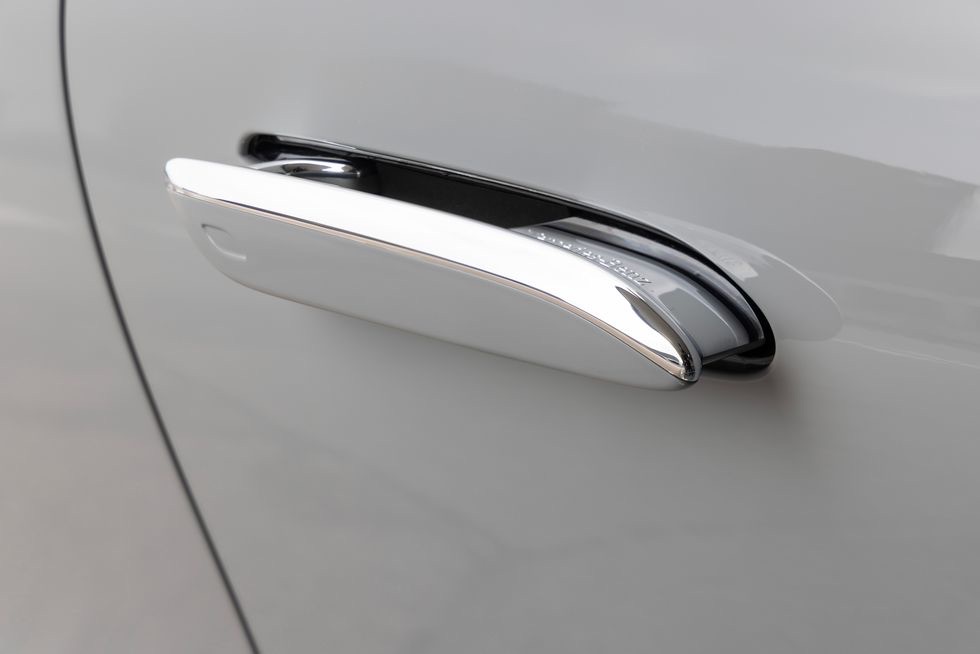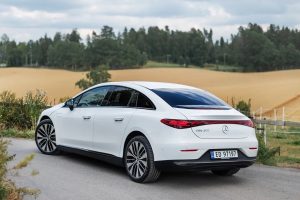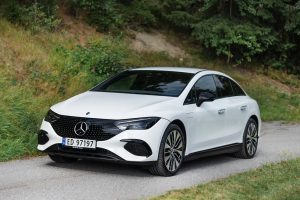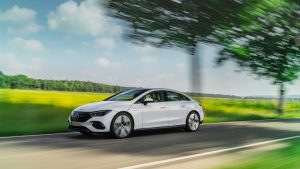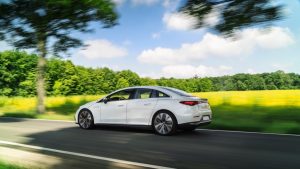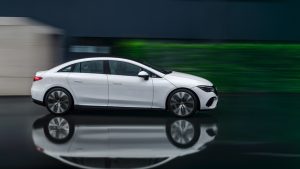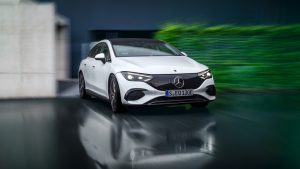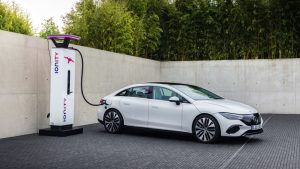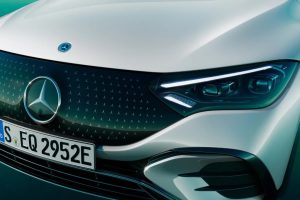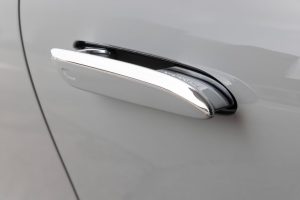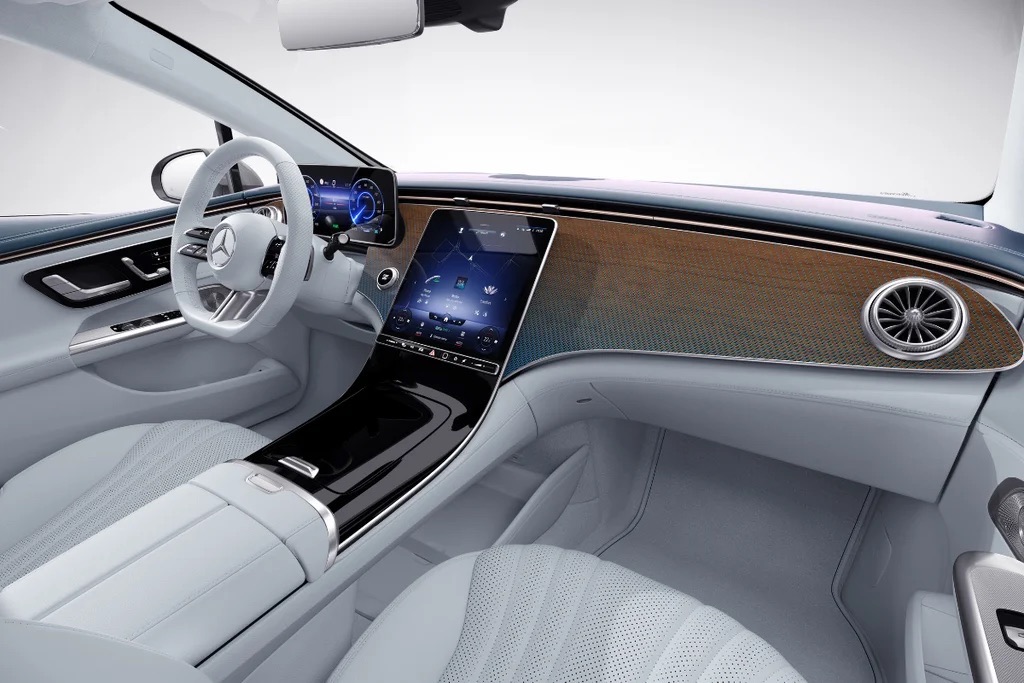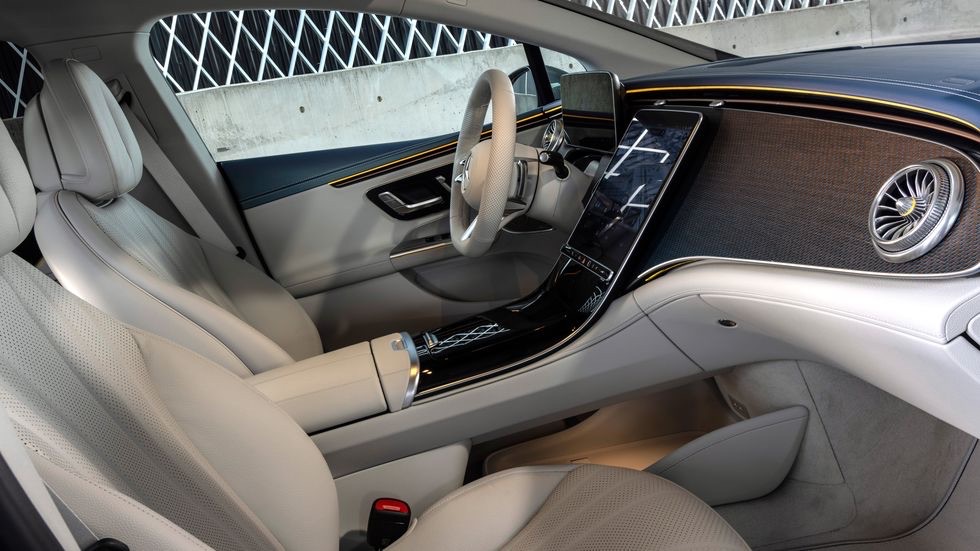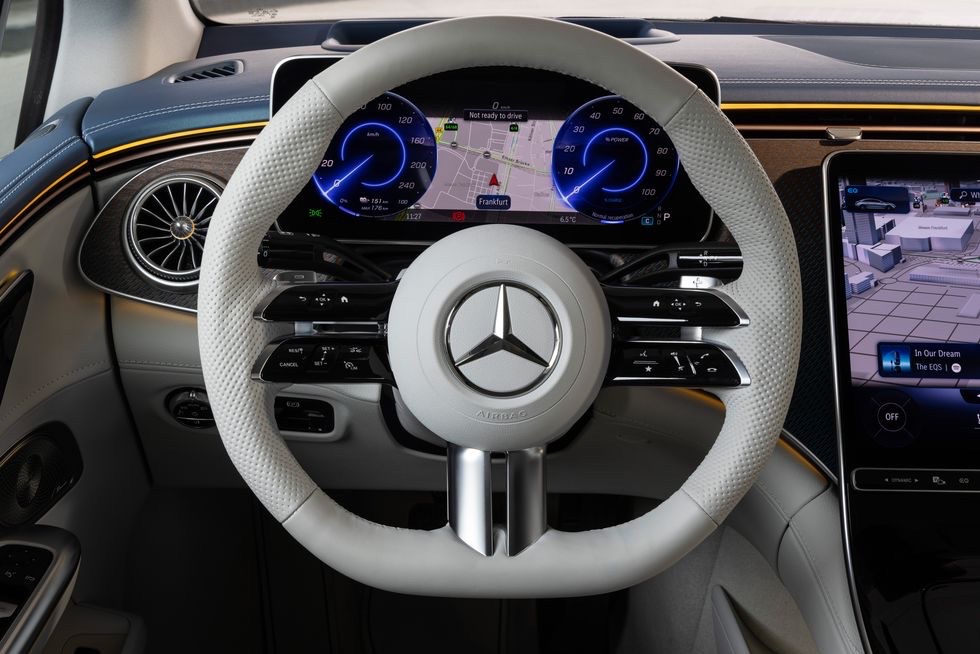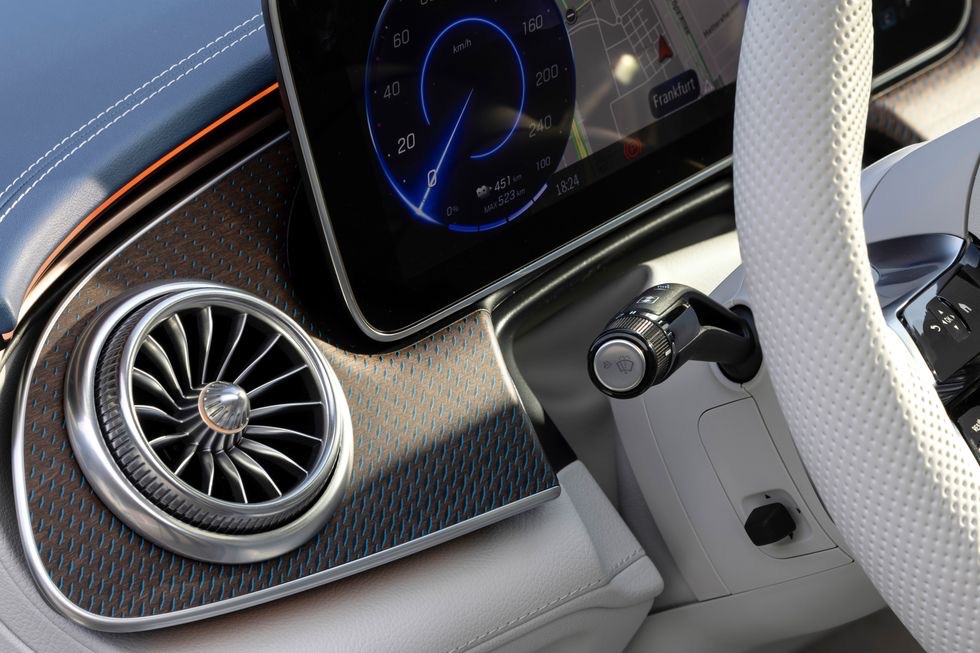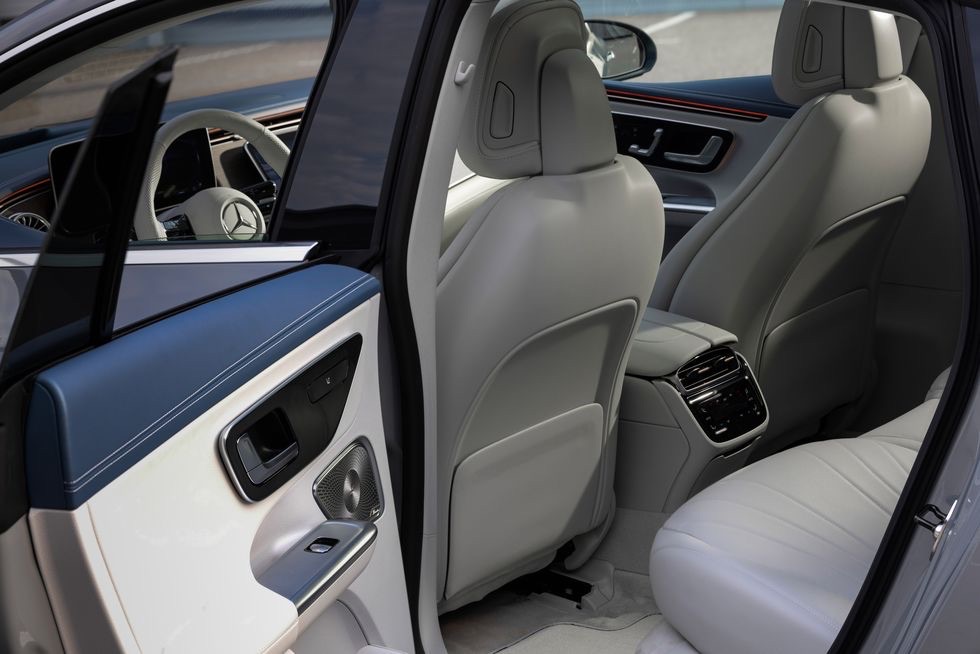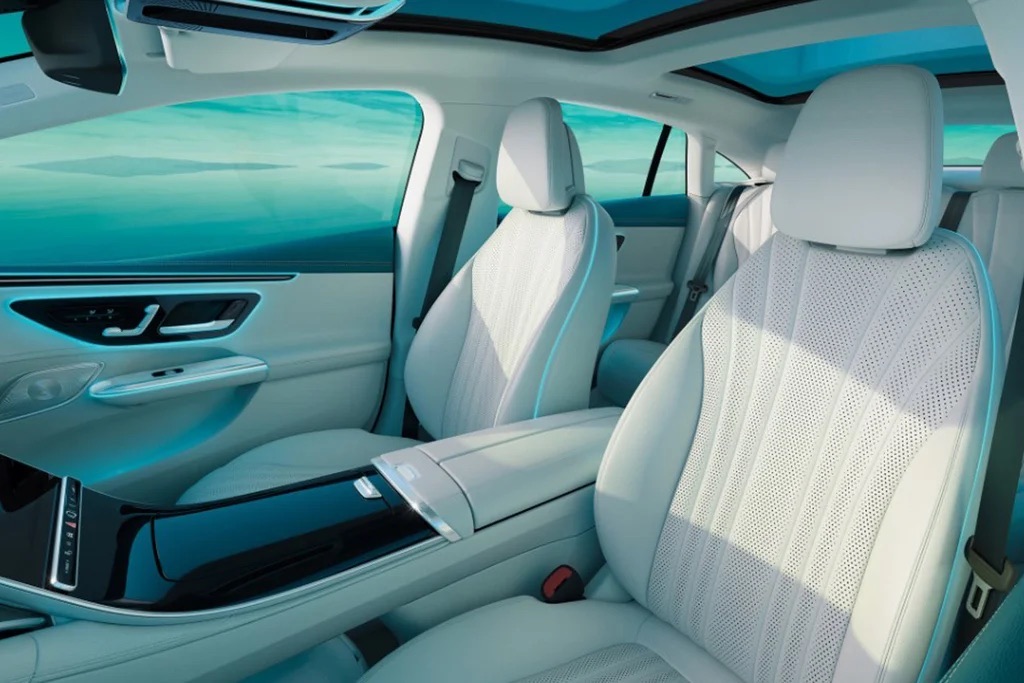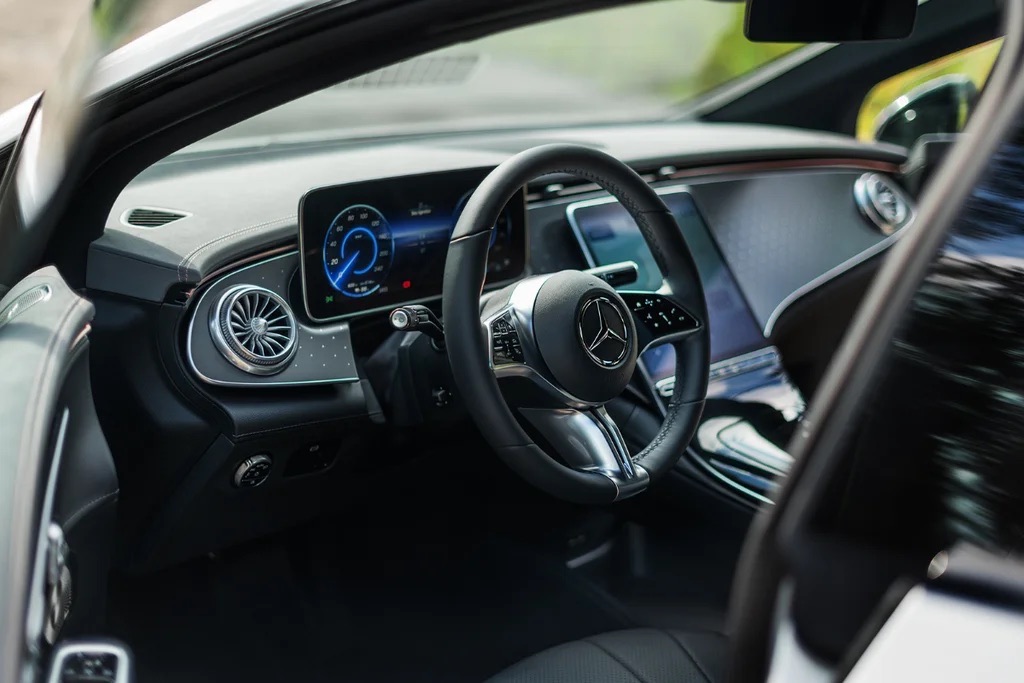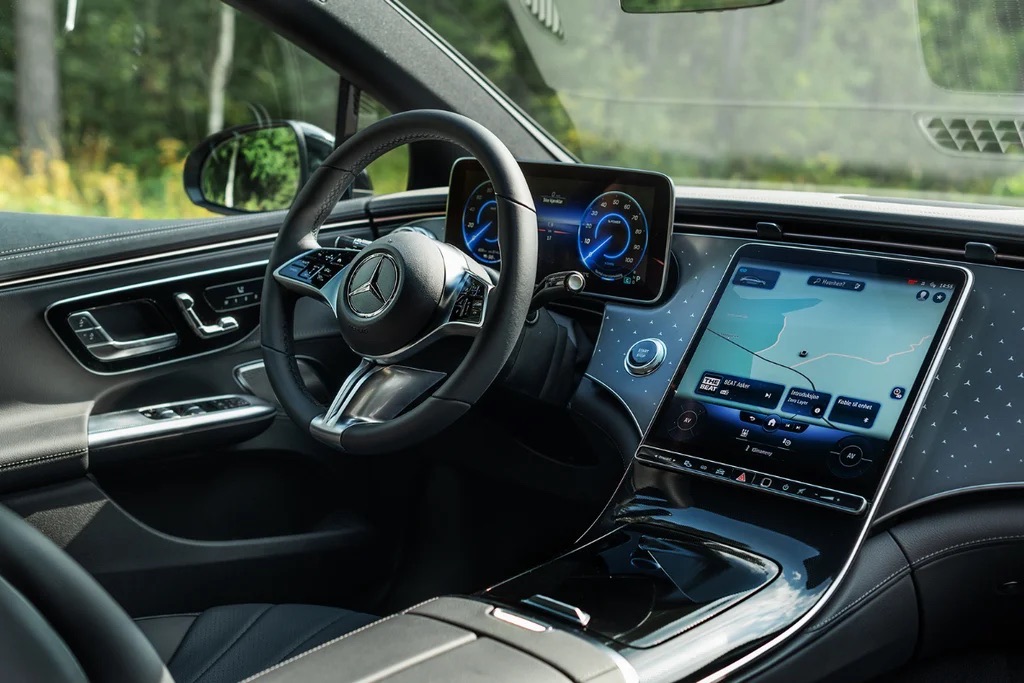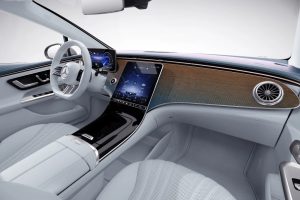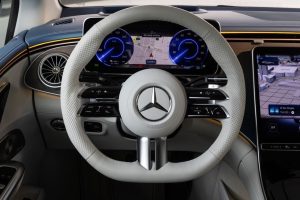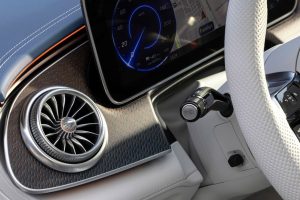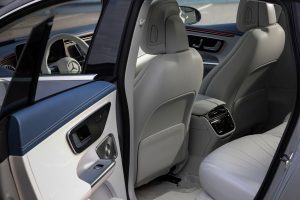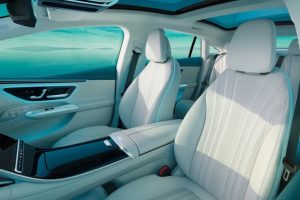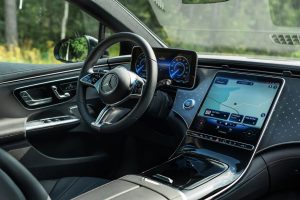Mercedes EQE 300
The Mercedes EQE 300 is an electric luxury sedan from Mercedes-Benz. It is part of the company’s EQ brand of electric vehicles and was first unveiled in September 2021.
The EQE 300 is powered by a single electric motor that produces 221 kW (300 hp) and 550 Nm of torque. It has a 100 kWh battery pack that gives it an estimated range of over 660 km (410 miles) on a single charge. The car can accelerate from 0-100 km/h (0-62 mph) in 5.7 seconds and has a top speed of 210 km/h (130 mph).
The EQE 300 is equipped with advanced features such as a 56-inch hyper screen, which combines the instrument cluster, infotainment system, and climate control into one large, curved display. It also has a range of driver assistance features, including active lane change assist and traffic sign assist.
The EQE 300 is designed to compete with other luxury electric sedans such as the Tesla Model S and the Audi e-tron GT. It is expected to be available for purchase in Europe and North America in 2022.
| Performance | |
| Acceleration 0 – 100 km/h | 7.6 sec |
| Top Speed | 210 km/h |
| Electric Range | 515 km |
| Total Power | 180 kW (245 PS) |
| Total Torque | 550 Nm |
| Drive | Rear |
| Battery and Charging | |
| Battery Capacity | 100.0 kWh |
| Battery Useable | 89.0 kWh |
| Europe | |
| Charge Port | Type 2 |
| Port Location | Right Side – Rear |
| Charge Power | 11 kW AC |
| Charge Time (0->515 km) | 9h45m |
| Charge Speed | 54 km/h |
| Fast charge Port | CCS |
| FC Port Location | Right Side – Rear |
| Fast charge Power (max) | 170 kW DC |
| Fast charge Time (52->412 km) | 33 min |
| Fast charge Speed | 650 km/h |
| Energy Consumption | |
| EVDB Real Range | |
| Range | 515 km |
| Vehicle Consumption | 173 Wh/km |
| CO2 Emissions | 0 g/km |
| Vehicle Fuel Equivalent | 1.9 l/100km |
| WLTP Ratings (TEL) | |
| Range | 639 km |
| Rated Consumption | 160 Wh/km |
| Vehicle Consumption | 139 Wh/km |
| CO2 Emissions | 0 g/km |
| Rated Fuel Equivalent | 1.8 l/100km |
| Vehicle Fuel Equivalent | 1.6 l/100km |
| WLTP Ratings (TEH) | |
| Range | 550 km |
| Rated Consumption | 188 Wh/km |
| Vehicle Consumption | 162 Wh/km |
| CO2 Emissions | 0 g/km |
| Rated Fuel Equivalent | 2.1 l/100km |
| Vehicle Fuel Equivalent | 1.8 l/100km |
| TEL = Test Energy Low | TEH = Test Energy High | |
|
Rated = official figures as published by the manufacturer. Rated consumption and fuel equivalency figures include charging losses.
|
|
|
Vehicle = calculated battery energy consumption used by the vehicle for propulsion and onboard systems.
|
|
| Real Energy Consumption Estimation between 122 – 237 Wh/km | |
| City – Cold Weather | 184 Wh/km |
| Highway – Cold Weather | 237 Wh/km |
| Combined – Cold Weather | 207 Wh/km |
| City – Mild Weather | 122 Wh/km |
| Highway – Mild Weather | 184 Wh/km |
| Combined – Mild Weather | 151 Wh/km |
|
Energy use for each trip will vary considerably depending on the driver and the conditions. Therefore, we have provided a range of estimates which can be useful in developing an understanding of the potential benefits of this technology.
|
|
| Dimensions and Weight | |
| Length | 4946 mm |
| Width | 1906 mm |
| Width with mirrors | 2104 mm |
| Height | 1492 mm |
| Wheelbase | 3120 mm |
| Weight Unladen (EU) | 2385 kg |
| Gross Vehicle Weight (GVWR) | 2880 kg |
| Max. Payload | 570 kg |
| Cargo Volume | 430 L |
| Cargo Volume Max | 895 L |
| Cargo Volume Frunk | 0 L |
| Roof Load | 100 kg |
| Tow Hitch Possible | Yes |
| Towing Weight Unbraked | 750 kg |
| Towing Weight Braked | 750 kg |
| Vertical Load Max | No Data |
| Miscellaneous | |
| Seats | 5 people |
| Isofix | No Data |
| Turning Circle | 12.5 m |
| Platform | DAIMLER EVA2 |
| Car Body | Sedan |
| Segment | E – Executive |
| Roof Rails | No |
| EV Dedicated Platform | Yes |
Home and Destination Charging (0 -> 100%)
A public charging station is required to use the highest possible charging rate. The EVSE/charging station’s charging capacity affects how long it takes to fully charge the battery. The table below shows all possible options for fully charging the Mercedes EQE 300.
In Europe, plugging an electric car into an outlet is often as easy as plugging it into a household outlet, but there are differences from country to country. The table below shows the different ways to charge the Audi Mercedes EQE 300, but in some countries, some chargers may not be available.
Type 2 (Mennekes – IEC 62196)

| Charging Point | Max. Power | Power | Time | Rate |
|
Standard 11.0 kW On-Board Charger
|
||||
| Wall Plug (2.3 kW) | 230V / 1x10A | 2.3 kW | 45h45m | 11 km/h |
| 1-phase 16A (3.7 kW) | 230V / 1x16A | 3.7 kW | 28h30m | 18 km/h |
| 1-phase 32A (7.4 kW) | 230V / 1x32A | 7.4 kW | 14h15m | 36 km/h |
| 3-phase 16A (11 kW) | 400V / 3x16A | 11 kW | 9h45m | 53 km/h |
| 3-phase 32A (22 kW) | 400V / 3x16A | 11 kW | 9h45m | 53 km/h |
|
Optional 22.0kW On-Board Charger
|
||||
| Wall Plug (2.3 kW) | 230V / 1x10A | 2.3 kW | 45h45m | 11 km/h |
| 1-phase 16A (3.7 kW) | 230V / 1x16A | 3.7 kW | 28h30m | 18 km/h |
| 1-phase 32A (7.4 kW) | 230V / 1x32A | 7.4 kW | 14h15m | 36 km/h |
| 3-phase 16A (11 kW) | 400V / 3x16A | 11 kW | 9h45m | 53 km/h |
| 3-phase 32A (22 kW) | 400V / 3x32A | 22 kW | 4h45m | 100 km/h |
ast Charging (10 -> 80%)
If you want to enjoy driving an electric car, one of the most important features to consider is the number of miles per hour the car can travel while charged. This is called the “range” of the car. All electric cars have a certain range, even if they are 100% charged. This is because they do not have an internal combustion engine to lean on if you need to drive a long distance.
Max. Power: The maximum power provided by the charging point
Avg. Power: The average power provided by the charging point during a session of 10% to 80%.
Time: the time it takes to charge from 10% to 80%
Speed: the average charging rate during the session of 10% to 80%
Combined Charging System (CCS Combo 2)
| Charging Point | Max. Power | Avg. Power | Time | Rate |
| CCS (50 kW DC) | 50 kW | 50 kW | 79 min | 270 km/h |
| CCS (100 kW DC) | 100 kW | 85 kW | 46 min | 470 km/h |
| CCS (150 kW DC) | 150 kW | 110 kW | 36 min | 600 km/h |
| CCS (175 kW DC) | 170 kW | 120 kW | 33 min | 650 km/h |
| CCS (350 kW DC) | 170 kW | 120 kW | 33 min | 650 km/h |
| Brand | Mercedes |
| Model | EQE 300 |
| Body Style | Sedan |
| Car Engine | electric |
| Motor power | 180 |
| Maximum Torque, Nm | 550 |
| Battery Energy, kWh | 100.0 |
| Power reserve (NEDC/EPA/WLTP), km | - / - / 515 |
| Level Charging (230/400/DC), hours | 14.15 / 4.45 / 0.33 |
| Electrical Acceleration, 0-100 km/h (0-62.1 mph) in sec | 7.6 |
| Top Speed, km/h | 210 |
